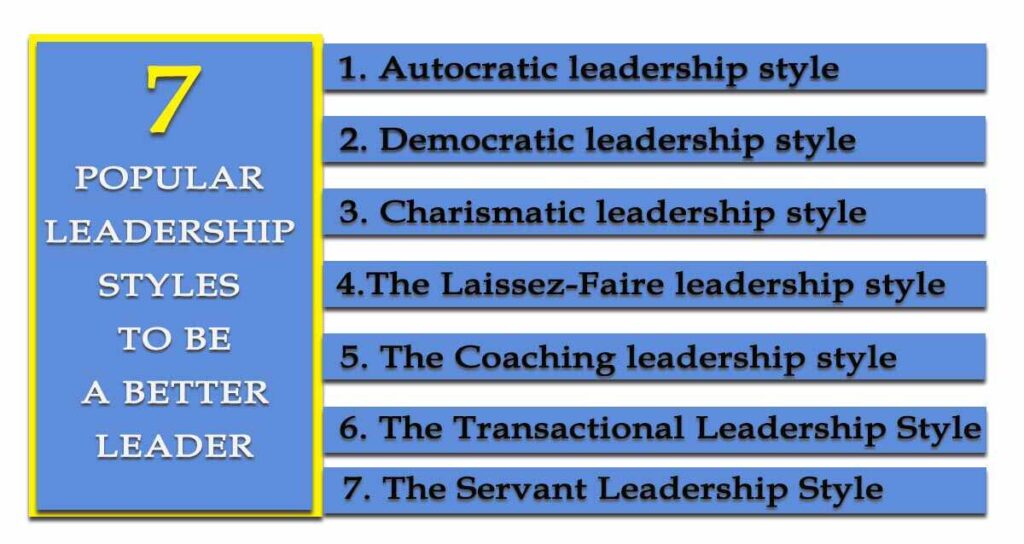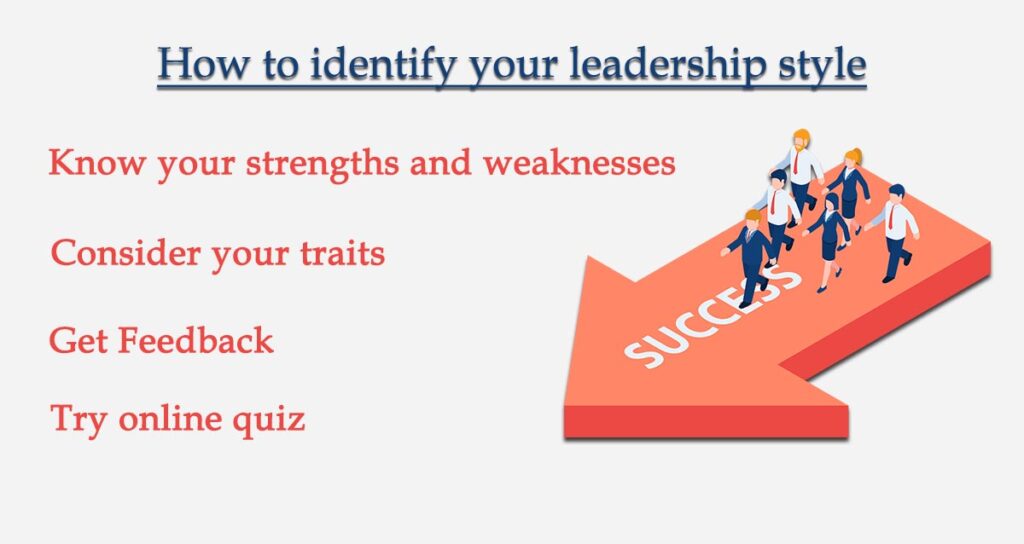Find Your Leadership Voice: Uncovering the 7 Unique Styles To Be a Better Leader
The job of a leader got way harder after the new normal.
The perception of people and the sought-after leadership skills and traits within organizations have undergone significant shifts.
Between the pandemic, digital transformation, the great resignation, inflation, and more, the role of a leader grew more crucial within an organization as well as for the individual.
Leaders aren’t born, they are made. And they are made just like anything else, through hard work.
– Vince Lombardi, legendary American football coach
And, they are not made overnight. They are built through experiences and development through learning.
Research says that only 10% of people are natural leaders. The rest of us need to work on developing leadership qualities and finding the right style to lead the teams.
While there’s no one size fits all approach to leading a team, some techniques can help you hone your leadership abilities and find your unique leadership style.
What you’ll find in this article:
Let’s get started…
7 Popular Leadership Styles To Be A Better Leader
Before we get into the different leadership styles, let’s understand what leadership style means:
What is Leadership style?
Leadership style means a leader’s approach to interacting with and influencing their team or followers. It encompasses the leader’s behaviors, attitudes, and actions in leading and managing others. Different leadership styles can have varying impacts on team dynamics, motivation, and overall performance.

Leadership styles can be majorly categorized into:
- Autocratic leader
- Democratic leader
- Charismatic leader
- Laissez-Faire leader
- Coaching leader
- Transsactional leader
- Servant leader
Each style has its own characteristics and implications for how you can get things done, communicate, motivate, make decisions, and help your team members as a leader.
Autocratic leadership style
An autocratic leadership style is an approach where the leader holds full control and authority over decision-making and task execution. In this style, the leader makes decisions independently and expects strict compliance from their team without much input or involvement from them.
Autocratic leaders typically have a hierarchical and top-down approach, where they give directives, set expectations, and closely supervise their team’s work. They exercise a high degree of power and control over the decision-making process.
Benefits: Quick decision-making during time-sensitive situations and clear instructions and expectations to the team.
Drawbacks: Limited involvement of the team, strict rules and regulations, employees may feel undervalued, reduced engagement, creativity, and initiative among your team players.
If you want to be a successful leader, ensure you incorporate elements of other leadership styles, such as participative or democratic approaches, to foster collaboration, innovation, and empowerment within the teams.
Democratic leadership style
This leadership style involves values, collaboration, input, and diverse perspectives from team members. The leaders involve the team in decision-making processes, seeking their ideas and feedback.
Since they engage the team, they build trust, engagement, and a sense of ownership among team members.
Benefits: Increases employee engagement, collaboration, trust, and improved decision quality.
Drawbacks: Decisions could be time-consuming and lead to analysis paralysis as well as a potential for conflict and disagreements.
Charismatic leadership style
Charismatic leaders possess a magnetic presence and a natural ability to influence and inspire others. They are likable, and their energy boosts team morale and motivates them toward success.
For example, Steve Jobs, the co-founder of Apple, was popular for his charismatic leadership style. His visionary ideas, attention to detail, and captivating presentation skills helped Apple become a global technology powerhouse. Jobs’ ability to inspire his team and customers with his passion for design and innovation left a lasting impact on the industry.
Benefits: Inspirational, builds strong relationships within the team, and persuasive.
Drawbacks include:
- The team could be overly dependent on the leader.
- This type of leader may prioritize their vision over processes and systems.
- They could use their influence to manipulate others.
The Laissez-Faire leadership style
This style is a hands-off approach that offers more freedom and minimal interference in the task execution of the employees.
These leaders trust their employees’ expertise and judgment and allow them to take ownership of their work.
A laissez-faire leader provides necessary resources and support, giving the team more room to work with and exercise their skills and creativity.
Benefits include:
- Promotes creativity and innovation
- Encourages ownership and initiative
- Enhances employee engagement
- Nurtures trust and collaboration
Drawbacks include:
- Scope for inefficiencies and poor decision-making.
- Might increase conflicts
- Potential for low accountability
- Reduced development and feedback
This leadership style works well when the employees are well-informed and self-motivated.
The Coaching leadership style
While using the coaching leadership style, you should focus on the growth and development of your team members. You need to provide guidance, support, and feedback to help individuals reach their full potential.
A coaching leader takes time to understand each team member’s strengths, weaknesses, and goals and then offers guidance and resources to promote their team’s growth.
Satya Nadella, Microsoft’s Executive Chairman and CEO is an example of the Coaching Leadership style. When Nadella assumed the leadership role at Microsoft during a period of stagnation, he implemented a coaching approach to drive positive change. He encouraged employees to adopt a growth mindset. He also actively engaged with them, making himself accessible for questions, feedback, and support.
With this approach, Nadella transformed the company culture and fostered a more prosperous and innovative period in Microsoft’s history. His coaching leadership style significantly revitalized the organization and empowered employees to reach their full potential.
Benefits include:
- Develops the individual potential of the employees
- Improves performance and productivity
- Increases employee engagement and satisfaction
- Promotes stronger relationships and trust
Drawbacks include:
- May not work during time-sensitive projects
- Needs active listening and asking powerful questions, which is not easy for some leaders.
- Can be hard to deal with people who are resistant to change
- Requires additional time and effort to coach employees individually
The Transactional Leadership Style:
Using the Transactional leadership style, you emphasize a system of rewards and punishments to motivate and manage your team. You set clear expectations, establish performance goals, and provide rewards such as bonuses, recognition, or promotions for meeting or exceeding targets.
Conversely, you may also administer corrective actions or reprimands for not meeting expectations. As a transactional leader, you need to focus on maintaining productivity, ensuring adherence to guidelines, and achieving predetermined objectives.
Benefits include:
- Clear expectations
- Emphasizes accountability
- Improves efficiency
Drawbacks include:
- Limited creativity and innovation
- Lack of employee engagement
- Employees may resist changes to avoid punishment
- This may lead to micromanagement
Do keep in mind while transactional leadership can be effective in certain situations, it may not be suitable for fostering long-term employee engagement, creativity, and adaptability in rapidly changing environments.
The Servant Leadership Style
In this style, the leader’s main goal is to serve their people rather than prioritizing organizational or personal success. In this case, the leaders are incredibly self-aware and understand their people.
This leader prioritizes the well-being, growth, and development of their employees. Servant leader listens to their team, encourages open communication, removes obstacles, and provides resources for success. They create a supportive and empowering work environment where they want individuals to feel valued, understood, and thrive.
Benefits include:
- Employees career development
- Better communication
- Motivated team
Drawbacks include:
- Less authority
- Doesn’t work for some employees
- Hard to execute
How to identify your leadership style
Now that you know different leadership styles, maybe you want to change your style or incorporate some of these styles into yours.

Here are our four tips to use to find your leadership style.
Know your strengths and weaknesses
Understand your natural strengths and weaknesses and be aware of your communication with others.
Self-awareness is a great tool to help you change your behavior.
Analyze how they interact with your decisions and observe when they are reactive while facing pressure.
Consider your traits
Before that, analyze your personal traits. It helps you determine your natural style of leadership. You should know that there isn’t a specific good or bad trait, but they’d help as a foundation to find your own leadership style.
Get Feedback
Know what you want to achieve. Find ways to get fair feedback on how you interact with others. You can talk to a well-wisher or co-worker at your workplace who can genuinely give feedback.
Try online quiz
There are quite a few free tools and quizzes on finding your leadership styles, which can help you assess your unique style.
To sum it up!
The most successful leaders demonstrate flexibility and versatility in their approach, employing different leadership styles as appropriate to maximize team performance and promote a positive work environment.
A leader must be agile enough to adapt their leadership style based on the situation, the needs of their team, and the goals they aim to achieve.





Superb Blog!!